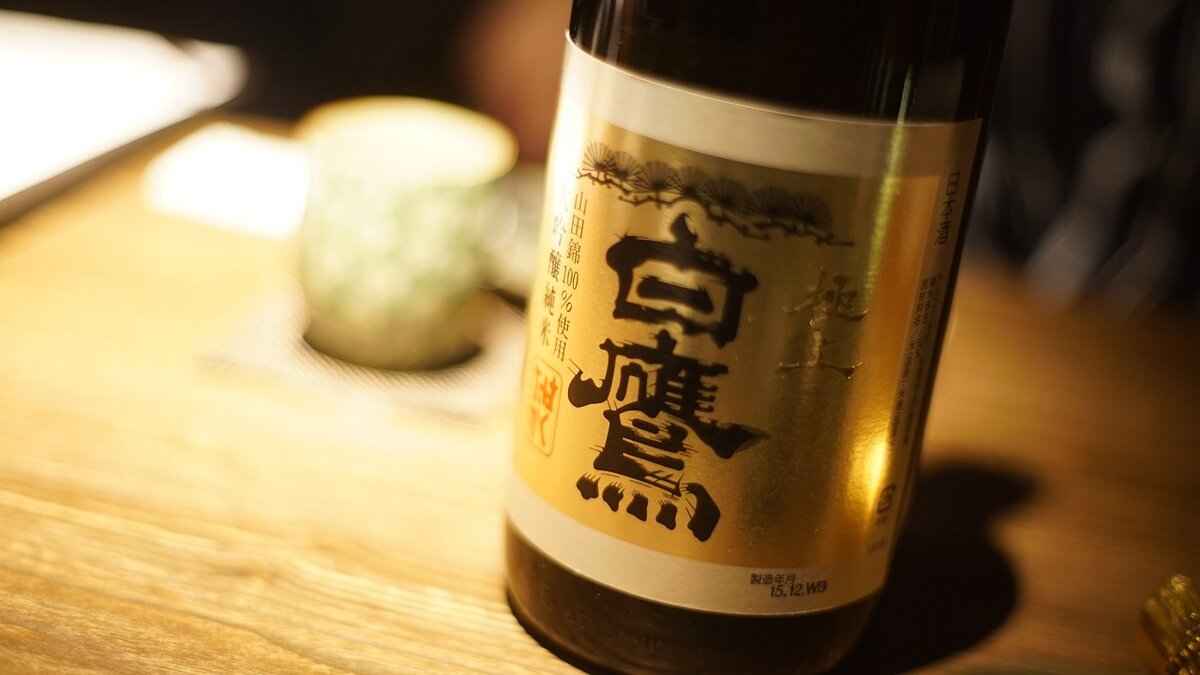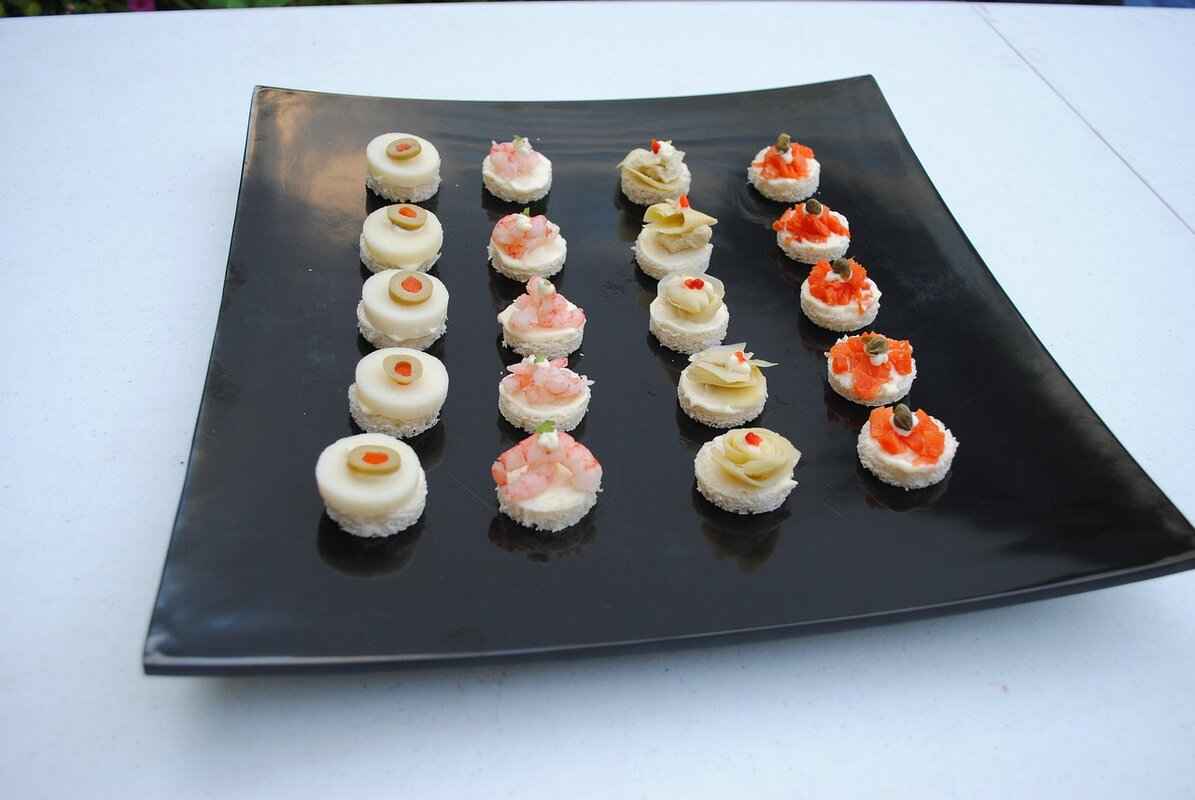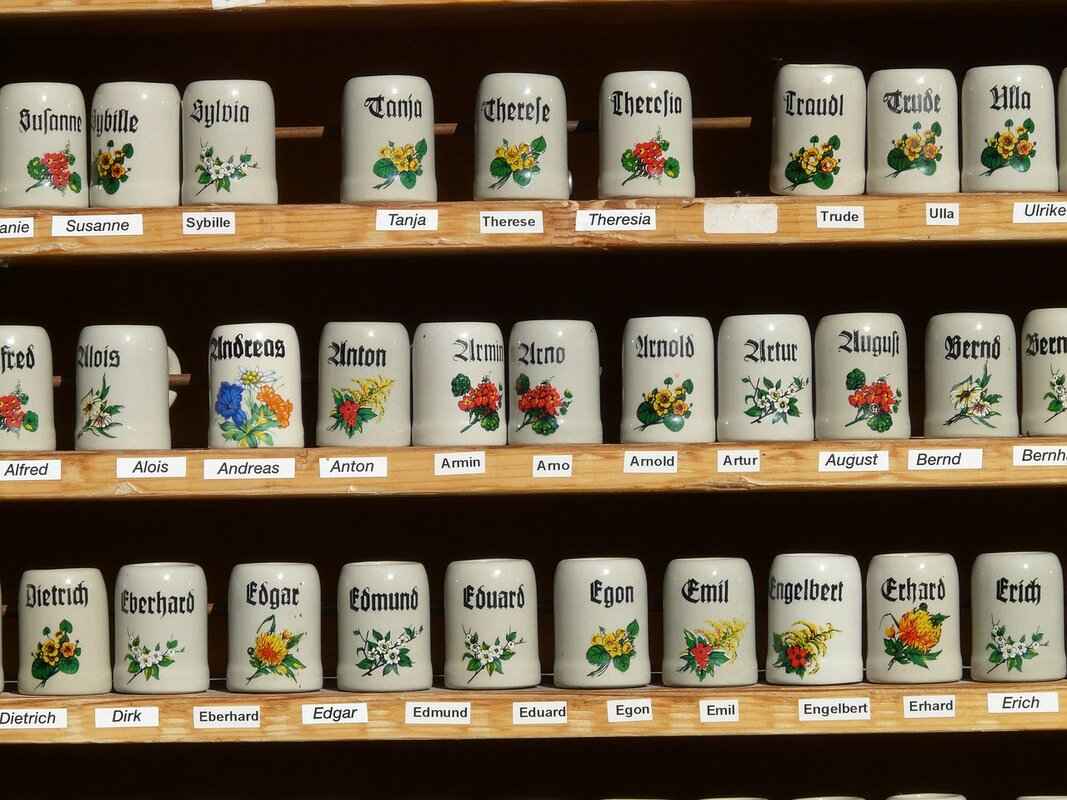This article explores the differences and similarities between sake and soju, examining their uses in contemporary cocktails and drinks, as well as their cultural significance.
Sake, often referred to as Japanese rice wine, is brewed through a unique fermentation process that involves converting starches in rice into sugars, which are then fermented into alcohol. The key ingredients include polished rice, water, yeast, and koji mold. This intricate brewing process not only affects the flavor profiles of sake but also enhances its versatility in modern mixology. Sake’s flavor can range from sweet to dry, making it suitable for a variety of cocktails.
Soju is a Korean distilled spirit that is distinct from sake in several ways. It is typically made from grains such as barley, wheat, or rice, but can also be produced from sweet potatoes. The production process involves both fermentation and distillation, resulting in a higher alcohol content that can range from 16% to 25%. This diversity in ingredients and production contributes to a wide range of flavors, from neutral to rich and complex.
While both beverages hold significant cultural importance in Japan and Korea, respectively, there are key differences between sake and soju:
- Ingredients: Sake is primarily made from rice, while soju can utilize various grains and sweet potatoes, leading to different taste and aroma profiles.
- Alcohol Content: Sake generally has a lower alcohol content compared to soju, affecting their suitability for different types of cocktails.
- Flavor Profiles: Sake’s flavors are often more delicate and nuanced, while soju can be bolder and more versatile in cocktails.
Both sake and soju have made significant inroads into modern cocktail culture. Bartenders are increasingly experimenting with these spirits to create innovative drinks that appeal to a wide audience.
Sake’s versatility allows it to shine in numerous cocktails. Here are some popular sake-based drinks:
- Classic Sake Martini: A modern twist on the traditional cocktail, this drink combines sake with gin or vodka, resulting in a smooth and elegant beverage.
- Sake Sangria: This refreshing drink combines seasonal fruits with sake, creating a delightful cocktail perfect for social gatherings.
Soju’s adaptability makes it a favorite in various cocktails. Here are some popular soju cocktails:
- Soju Lemonade: A refreshing blend of soju and lemonade that balances sweetness and tartness, making it an ideal choice for warm days.
- Soju Mojito: This cocktail offers a Korean twist on the classic mojito, incorporating fresh mint, lime, and soju for a refreshing summer drink.
In conclusion, both sake and soju offer unique flavors and cultural significance that enrich modern cocktail culture. Their distinct characteristics allow for a variety of creative cocktails, making them essential components for bartenders and enthusiasts alike.

What is Sake and How is it Made?
Sake, often described as a traditional Japanese rice wine, is a fascinating beverage crafted through a meticulous brewing process. Unlike wine made from grapes, sake is produced from polished rice, water, yeast, and koji mold. Understanding how sake is made not only enhances appreciation for its rich flavors but also reveals its versatility in contemporary mixology.
The production of sake involves a unique fermentation process that distinguishes it from other alcoholic beverages. Initially, the rice is polished to remove the outer layers, which can contain impurities and unwanted flavors. The degree of polishing affects the final taste and quality of the sake. For instance, premium sakes often have a higher polishing ratio, resulting in a cleaner and more refined flavor profile.
After polishing, the rice is washed and soaked in water before being steamed. This steaming process is crucial as it prepares the rice for fermentation. Once steamed, the rice is inoculated with koji mold, which converts the starches in the rice into sugars. This step is vital, as it kickstarts the fermentation process.
Next, yeast is added to the mixture, initiating fermentation. During this phase, the sugars are transformed into alcohol. The fermentation process can last from a few weeks to several months, depending on the desired characteristics of the sake. The result is a fermented mash known as “moromi,” which is then pressed to separate the liquid from the solids.
Once the sake is extracted, it undergoes a filtration process to remove any remaining impurities. Some sakes are pasteurized to enhance stability and flavor, while others are left unpasteurized to maintain freshness. Finally, the sake is diluted with water to achieve the desired alcohol content, typically ranging from 15% to 20%.
Sake is often enjoyed warm, chilled, or at room temperature, depending on the type and personal preference. Its flavor profiles can vary significantly, ranging from fruity and floral to earthy and savory. This versatility makes sake an excellent choice for various cocktails, allowing bartenders to creatively incorporate it into modern mixology.
In summary, the intricate process of making sake—from rice polishing to fermentation—plays a crucial role in its flavor and cultural significance. Understanding this process not only deepens appreciation for sake but also opens up a world of possibilities for enjoying it in contemporary drinks.

What is Soju and Its Distillation Process?
Soju is a traditional Korean distilled spirit that has gained immense popularity both in its native country and around the world. Distinct from other alcoholic beverages, soju is known for its unique production process, which involves both fermentation and distillation. This dual process not only contributes to its varied flavor profiles but also influences its alcohol content, making it a versatile spirit that can be enjoyed in a variety of ways.
The foundation of soju begins with its ingredients, which can include grains like barley, wheat, and rice, as well as starches from sweet potatoes or tapioca. The choice of base ingredient plays a significant role in the final flavor of the spirit. The production of soju typically involves the following steps:
- Fermentation: The selected starch is first converted into sugars through a process called saccharification. Yeast is then introduced, which ferments the sugars into alcohol. This initial fermentation stage is crucial as it lays the groundwork for the flavor profile.
- Distillation: After fermentation, the mixture is distilled to increase the alcohol content. Soju is usually distilled multiple times, which helps to refine its flavors and results in a smoother finish. The distillation process can yield a spirit with an alcohol content ranging from 16% to 25% or more, depending on the desired strength.
- Flavoring: While some soju is enjoyed in its pure form, many brands offer flavored varieties, incorporating ingredients like fruit or herbs. This adds an additional layer of complexity and appeal, making soju a favorite among diverse audiences.
One of the most appealing aspects of soju is its versatility. It can be served neat, on the rocks, or mixed into cocktails. The spirit’s relatively high alcohol content and neutral flavor make it an excellent base for various drinks, allowing it to pair well with a wide range of mixers.
When comparing soju to other distilled spirits like vodka or whiskey, several key differences emerge. Unlike vodka, which is often distilled to a high proof and has a very neutral flavor, soju retains some of the characteristics of its base ingredient, resulting in a more complex taste. Additionally, the lower alcohol content in many soju varieties makes it a more approachable option for casual drinking occasions.
In Korea, soju is more than just a beverage; it is an integral part of social gatherings and celebrations. It is customary to share soju among friends and family, often accompanied by traditional Korean dishes. The act of pouring soju for others is considered a sign of respect and friendship, enhancing its cultural importance.
Moreover, soju has evolved in contemporary settings, finding its way into bars and restaurants worldwide. Bartenders are increasingly incorporating soju into their cocktail menus, creating innovative drinks that highlight its unique qualities. From soju cocktails like Soju Mojitos to fruity mixes, the spirit has proven to be adaptable to various drinking cultures.
In conclusion, soju is a fascinating spirit with a rich history and a unique production process that sets it apart from other alcoholic beverages. Its versatility, cultural significance, and varied flavor profiles make it a worthy addition to any drinker’s repertoire. Whether enjoyed in traditional settings or modern cocktail bars, soju continues to captivate audiences globally.
How is Sake Different from Soju?
When delving into the world of alcoholic beverages, particularly those that hail from Asia, two drinks often come to the forefront: sake and soju. While both are integral to their respective cultures, they are distinct in their ingredients, production methods, and flavor profiles. Understanding these differences can enhance your appreciation for both drinks.
- Ingredients: Rice vs. Grain
Sake is primarily made from rice, specifically polished rice that has been fermented. The quality of the rice and the degree of polishing significantly impact the final product’s taste and aroma. In contrast, soju can be produced from a variety of ingredients, including grains like barley and wheat, as well as sweet potatoes and even tapioca. This diversity in ingredients leads to a wide spectrum of flavors in soju, ranging from sweet to earthy.
- Production Methods: Brewing vs. Distillation
The production of sake involves a brewing process that is similar to beer-making. This process includes multiple parallel fermentation, where starch is converted to sugar and sugar to alcohol simultaneously. On the other hand, soju undergoes a distillation process, which concentrates the alcohol and flavors. This fundamental difference in production results in sake having a lower alcohol content, typically around 15-20%, while soju can range from 16-25% or even higher.
- Flavor Profiles: Subtle vs. Bold
Sake is known for its subtle and nuanced flavors, often described as smooth and delicate. It can have fruity, floral, or even umami notes, depending on the type of rice and the brewing process used. Soju, however, tends to have a more pronounced flavor, often with a slight sweetness or a more robust character, particularly when flavored varieties are considered. This difference in flavor profiles makes each beverage suitable for different types of drinking experiences.
In addition to these differences, both beverages hold significant cultural importance. Sake is often associated with Japanese rituals and celebrations, while soju is a staple in Korean dining and social gatherings. Understanding these distinctions not only enhances one’s knowledge of these beverages but also enriches the experience of enjoying them.
In the context of modern mixology, both sake and soju have found their way into contemporary cocktails. Bartenders creatively incorporate these spirits, utilizing their unique characteristics to craft innovative drinks that honor their cultural roots while appealing to modern palates.
Ultimately, whether you prefer the refined elegance of sake or the bold versatility of soju, each drink offers a unique journey through the rich tapestry of Asian beverage culture.
Ingredients: Rice vs. Grain
Sake and soju are two distinct beverages that represent their respective cultures—Japan and Korea. At the heart of their differences lies the primary ingredient used in their production. Sake is predominantly made from polished rice, while soju can be crafted from a variety of ingredients, including grains such as barley and wheat, as well as sweet potatoes.
The choice of ingredient profoundly influences the flavor and aroma of each drink. Sake undergoes a meticulous brewing process that involves the fermentation of rice. The rice is polished to remove the outer layers, which affects the final taste. This polishing process is crucial, as it determines the quality of the sake. The more the rice is polished, the more refined the sake becomes, resulting in a smoother and often more delicate flavor profile.
On the other hand, soju’s versatility in ingredients allows for a broader range of flavors. For instance, sweet potato soju has a rich, earthy sweetness, while grain-based soju tends to be lighter and crisper. This variety means that soju can appeal to a wider audience, as it can be tailored to different palates. The distillation process of soju also contributes to its unique characteristics, producing a spirit that is generally higher in alcohol content compared to sake.
The differences in ingredients extend beyond just flavor; they also influence the cultural significance of each beverage. Sake is often associated with traditional Japanese ceremonies and celebrations, embodying a sense of heritage and craftsmanship. In contrast, soju is commonly enjoyed in casual settings, often accompanying meals or social gatherings in Korea. This cultural context adds another layer of appreciation for each drink.
Furthermore, the production methods reflect the values and practices of their respective cultures. Sake brewing is an art form that has been refined over centuries, with a strong emphasis on quality and tradition. In contrast, soju production has evolved to meet modern demands, leading to mass production techniques that make it widely accessible.
In summary, the primary ingredients—rice for sake and various grains or sweet potatoes for soju—play a pivotal role in defining the taste, aroma, and cultural significance of these beverages. Understanding these differences not only enhances our appreciation for sake and soju but also enriches our experience when enjoying them in various cocktails and social settings.
As we delve deeper into the world of mixology, recognizing the unique qualities of sake and soju allows bartenders and enthusiasts alike to create cocktails that truly highlight the essence of these traditional drinks. The next time you enjoy a sake martini or a soju lemonade, remember the rich history and craftsmanship that go into each sip.
Alcohol Content and Flavor Profiles
Sake and soju are two beloved beverages that reflect the rich cultural heritages of Japan and Korea, respectively. One of the most significant differences between these two spirits lies in their alcohol content and flavor profiles. Understanding these distinctions can greatly influence their use in cocktails and drinks.
Sake generally has an alcohol content ranging from 15% to 20%, while soju typically contains between 20% and 25%. This difference in alcohol concentration not only affects the intensity of the drink but also its overall taste experience. Sake’s lower alcohol content allows for a more delicate and nuanced flavor profile, often characterized by fruity and floral notes. On the other hand, soju’s higher alcohol content can lead to a bolder, more pronounced flavor, which can be either smooth or sharp depending on the distillation process and ingredients used.
The flavor profile of sake is primarily influenced by its main ingredient, rice. The meticulous brewing process, which includes multiple parallel fermentation, results in a drink that is often described as umami-rich with hints of sweetness. The presence of amino acids and organic acids contributes to its complexity, making it a versatile ingredient in cocktails.
In contrast, soju can be distilled from various ingredients, including barley, wheat, and even sweet potatoes. This variety allows for a broader spectrum of flavors, ranging from earthy to fruity. The distillation process can also create a cleaner taste, making soju an excellent base for cocktails that require a spirit with a more pronounced kick.
The choice between sake and soju in cocktails often depends on the desired flavor profile and the type of drink being crafted. Sake’s subtlety makes it ideal for cocktails that aim to highlight the drink’s inherent flavors rather than overpower them. For example, a Sake Martini combines sake with gin, allowing the smoothness of sake to shine through.
Conversely, soju’s robust character can stand up to stronger flavors and mixers. Cocktails like Soju Lemonade or Soju Mojito benefit from soju’s ability to blend seamlessly with sweet and tart elements, creating refreshing drinks perfect for social gatherings.
When deciding between sake and soju for cocktails, consider the alcohol content and flavor profiles that best suit your palate and the occasion. Sake offers a delicate touch, perfect for those who appreciate subtle flavors, while soju provides a bolder choice for those looking to create vibrant and lively cocktails. Ultimately, both spirits offer unique characteristics that can enhance a variety of drinks, showcasing the rich traditions and flavors of their respective cultures.
How Are Sake and Soju Used in Cocktails?
Both sake and soju have made significant strides in the world of modern cocktails, captivating the interest of bartenders and cocktail enthusiasts alike. Their unique flavors and cultural histories lend themselves to creative mixology, resulting in innovative drinks that blend tradition with contemporary flair. This section delves into the exciting ways these two spirits are being utilized in cocktails, showcasing their versatility and appeal.
As global drinking cultures evolve, sake and soju have transitioned from traditional beverages to essential components of trendy cocktails. Bartenders are increasingly experimenting with these spirits, creating unique flavor profiles that appeal to a wide audience.
- Sake in Cocktails: Sake’s smooth texture and subtle flavors make it an ideal base for cocktails. Its ability to blend seamlessly with various ingredients allows for endless creativity. Bartenders often use sake in place of vodka or gin, introducing a delicate touch to classic cocktails.
- Soju in Cocktails: Soju’s higher alcohol content and diverse flavor options, ranging from fruity to herbal, make it a popular choice for mixing. Its versatility allows it to shine in both sweet and savory cocktails, often serving as a base for refreshing drinks.
One popular trend is the fusion of traditional cocktails with these spirits. For instance, the Sake Mojito replaces rum with sake, offering a refreshing twist on the classic Cuban drink. Similarly, the Soju Sour combines the spirit with citrus juices, creating a tangy and invigorating cocktail that appeals to a younger demographic.
Mixologists are also creating signature cocktails that highlight the unique characteristics of sake. Here are a few noteworthy examples:
- Sake Spritz: A refreshing blend of sake, soda water, and a splash of fruit juice, this cocktail is perfect for warm weather and gatherings.
- Sake Negroni: A Japanese twist on the classic Negroni, this drink substitutes sake for gin, adding a unique flavor profile to the beloved cocktail.
Soju’s adaptability allows it to be featured in a variety of cocktails that appeal to diverse palates. Here are some creative concoctions:
- Soju Tonic: A simple yet refreshing drink, combining soju with tonic water and a lime wedge, making it a popular choice for casual sipping.
- Soju Fruit Punch: A vibrant mix of soju, assorted fruit juices, and fresh fruits, this punch is great for parties and social gatherings.
Both sake and soju not only enhance the flavor of cocktails but also bring a cultural narrative to the bar scene. Their incorporation into modern mixology reflects a broader trend of blending traditional and contemporary drinking practices, inviting drinkers to explore the rich history behind these spirits while enjoying innovative flavors.
As the cocktail culture continues to evolve, the use of sake and soju will likely expand further, encouraging bartenders to push the boundaries of creativity. Whether you are a seasoned mixologist or a casual drinker, these spirits offer a delightful avenue for exploration and enjoyment.

What Are Popular Sake Cocktails?
Sake is a traditional Japanese beverage that has gained immense popularity worldwide, not only for its rich cultural significance but also for its versatility in cocktails. Its unique flavor profile allows it to blend beautifully with various ingredients, leading to innovative and exciting drinks. In this section, we will explore some of the most popular sake cocktails that truly showcase its exceptional qualities.
Sake cocktails are not just refreshing; they also offer a distinctive taste experience. The subtle sweetness and umami flavors of sake can enhance the overall profile of a cocktail, making it a fantastic choice for those looking to explore new flavors.
- Classic Sake Martini: This cocktail is a modern twist on the traditional martini. It typically combines sake with dry vermouth, garnished with a cucumber slice or an olive. The result is a smooth, refreshing drink that highlights sake’s delicate flavors.
- Sake Sangria: A delightful mix of sake and fresh fruits, sake sangria is perfect for summer gatherings. To make this cocktail, simply mix your favorite fruits—such as oranges, strawberries, and apples—with sake and a splash of soda for fizz.
- Sake Mojito: This cocktail brings a Japanese flair to the classic mojito. Combine sake with fresh mint, lime juice, and a touch of sugar, topped with soda water. The result is a refreshing drink that’s perfect for warm weather.
- Sake Sunrise: Inspired by the classic tequila sunrise, this cocktail features sake, orange juice, and a splash of grenadine. The vibrant colors and sweet flavors make it a visually appealing and tasty drink.
- Sake Mule: A twist on the Moscow mule, this cocktail uses sake instead of vodka. Combine sake with ginger beer and lime juice, served in a copper mug for a refreshing and zesty drink.
Ingredients:- 3 oz sake- 1 oz dry vermouth- Cucumber slice or olive for garnishInstructions:1. Fill a shaker with ice.2. Add sake and vermouth.3. Shake well and strain into a chilled martini glass.4. Garnish with a cucumber slice or an olive.
Ingredients:- 1 bottle of sake- 1 cup of mixed fruits (oranges, strawberries, apples)- 1 cup of soda water- 1/4 cup of sugar (optional)Instructions:1. In a large pitcher, combine sake and fruits.2. If desired, add sugar and stir until dissolved.3. Chill in the refrigerator for at least an hour.4. Just before serving, add soda water for fizz.
In conclusion, sake cocktails offer a unique and delightful way to enjoy this traditional beverage. With a variety of recipes to choose from, there is something for everyone. Whether you prefer a classic martini or a fruity sangria, sake’s versatility shines through in every sip.
Classic Sake Martini
The is a contemporary cocktail that reimagines the traditional martini by integrating the delicate flavors of sake. This innovative drink not only highlights the smoothness of sake but also offers a refreshing alternative for cocktail enthusiasts. In this section, we will delve into the ingredients, preparation, and tips for crafting the perfect sake martini.
- Sake: Choose a high-quality junmai or ginjo sake for a richer flavor profile.
- Vodka: A smooth vodka complements the sake without overpowering it.
- Dry Vermouth: A splash of dry vermouth adds depth and complexity to the cocktail.
- Garnish: Traditional garnishes include a twist of lemon peel or a cucumber slice.
Crafting a Classic Sake Martini is a straightforward process that requires minimal ingredients and equipment:
1. Start by chilling your martini glass. You can do this by filling it with ice water while you prepare the cocktail.2. In a shaker, combine 2 ounces of sake, 1 ounce of vodka, and 1/2 ounce of dry vermouth.3. Fill the shaker with ice and shake gently for about 10-15 seconds. This ensures the ingredients are well mixed and chilled without diluting the flavors too much.4. Empty the ice water from your chilled martini glass.5. Strain the mixture into the glass using a fine mesh strainer to catch any ice shards.6. Garnish with a twist of lemon peel or a cucumber slice to enhance the aroma and presentation.
The Classic Sake Martini stands out due to its subtle flavor profile and smooth texture. Unlike traditional gin or vodka martinis, the use of sake introduces a unique umami flavor that can vary depending on the type of sake used. This versatility allows mixologists to experiment with different sake varieties, offering a personalized touch to each drink.
- Quality Matters: Always opt for premium sake and vodka to ensure a superior taste.
- Experiment with Ratios: Adjust the proportions of sake and vodka based on your taste preferences.
- Chill Your Ingredients: Keeping all components cold enhances the overall drinking experience.
- Garnish Creatively: Try different garnishes like pickled ginger or wasabi peas for an adventurous twist.
In summary, the is an exciting cocktail that merges the elegance of traditional martinis with the unique characteristics of sake. Its simplicity in preparation and the ability to customize flavors make it a favorite among cocktail lovers. Whether enjoyed at a sophisticated gathering or a casual evening at home, this drink is sure to impress and delight.
Sake Sangria
is a delightful fusion of traditional Japanese sake and vibrant fruits, creating a refreshing cocktail that is perfect for any gathering. This modern twist on the classic sangria not only highlights the unique flavors of sake but also brings a burst of freshness from the fruits used. Whether you are hosting a summer barbecue or a cozy winter get-together, is sure to impress your guests.
Creating a delicious sake sangria is simple and requires just a few key ingredients. Here’s a basic list:
- 1 bottle of sake (preferably a fruity or floral variety)
- 2 cups of mixed fruits (such as oranges, strawberries, and apples)
- 1 cup of soda water or lemon-lime soda for sweetness
- Optional: Fresh herbs like mint or basil for garnish
These ingredients blend beautifully to create a refreshing drink that is both visually appealing and delicious.
Making sake sangria is straightforward. Follow these steps to prepare your drink:
1. Start by washing and chopping your selected fruits into bite-sized pieces.2. In a large pitcher, combine the chopped fruits with the sake.3. Allow the mixture to sit for about 30 minutes to let the flavors meld.4. Just before serving, add the soda water to give it a refreshing fizz.5. Pour the sangria over ice in individual glasses and garnish with fresh herbs if desired.
This simple preparation method ensures that the flavors of the fruits and sake complement each other beautifully, resulting in a drink that is both refreshing and satisfying.
One of the best aspects of is its versatility. It can be customized based on seasonal fruits or personal preferences. Here are a few reasons to consider serving sake sangria:
- Refreshing and Light: This cocktail is less heavy than traditional sangrias that use red wine, making it ideal for warm weather.
- Unique Flavor Profile: The combination of sake and fresh fruits offers a unique taste that can surprise and delight your guests.
- Easy to Make: With minimal preparation, you can whip up a large batch to serve a crowd.
Absolutely! The beauty of sake sangria lies in its adaptability. You can experiment with different types of sake, such as junmai or nigori, and various combinations of fruits. For a tropical twist, try adding pineapple or mango. If you prefer a more herbal flavor, consider incorporating cucumber or rosemary.
In conclusion, is a refreshing cocktail that combines the best of both worlds—traditional sake and fresh fruits. Its versatility, ease of preparation, and unique flavor make it a perfect choice for any occasion. Whether you stick to the classic recipe or add your personal touch, sake sangria is sure to be a hit at your next gathering.

What Are Popular Soju Cocktails?
Soju, a beloved Korean spirit, has gained immense popularity in the cocktail scene due to its versatility and unique flavor profile. This distilled beverage, typically made from grains or sweet potatoes, can be enjoyed straight or as a key ingredient in various cocktails. Its ability to adapt to different flavors makes it a favorite among mixologists and cocktail enthusiasts alike. In this section, we will explore some of the most popular soju cocktails that highlight its distinctive characteristics and flavors.
- Soju Lemonade: A refreshing drink that combines the crispness of lemonade with the smoothness of soju. This cocktail is perfect for warm days and gatherings. To make it, simply mix equal parts of soju and lemonade, add a splash of soda water for fizz, and garnish with a lemon slice for a vibrant presentation.
- Soju Mojito: This cocktail offers a delightful twist on the classic mojito. By substituting rum with soju, you create a lighter and equally refreshing drink. Combine fresh mint leaves, lime juice, sugar, and soju in a shaker, muddle them together, and then strain into a glass filled with ice. Top it off with soda water and garnish with mint leaves for a refreshing summer treat.
- Soju Cosmopolitan: A Korean take on the iconic cosmopolitan, this cocktail features soju as the star ingredient. Mix soju with cranberry juice, lime juice, and a splash of orange liqueur. Shake well and strain into a chilled martini glass for a stylish drink that’s perfect for any occasion.
- Soju Sunrise: Inspired by the classic tequila sunrise, this cocktail uses soju to create a visually stunning drink. Layer soju with orange juice and a splash of grenadine for a beautiful gradient effect. Serve it over ice and watch as the colors blend, making it an eye-catching addition to any brunch or party.
- Soju Sour: For those who enjoy a tangy drink, the soju sour is a fantastic choice. Mix soju with fresh lemon juice, simple syrup, and a dash of bitters. Shake well and strain into a glass filled with ice, garnishing with a lemon wheel for a zesty kick.
These cocktails not only showcase the adaptability of soju but also highlight its ability to blend seamlessly with various flavors. Each drink offers a unique experience, whether you’re looking for something refreshing, tangy, or visually appealing. Soju cocktails are perfect for any gathering, providing a delightful way to enjoy this versatile spirit.
As the cocktail culture continues to evolve, soju remains a staple ingredient, inspiring bartenders to experiment and innovate. Its low alcohol content and smooth finish make it an excellent choice for those looking to enjoy flavorful drinks without overwhelming potency. Whether you’re a seasoned mixologist or a casual drinker, exploring soju cocktails can open up a world of exciting flavors and combinations.
Soju Lemonade
Soju lemonade is a refreshing cocktail that perfectly balances the sweetness of lemonade with the subtle kick of soju. This delightful drink is not only easy to prepare but also a fantastic choice for summer gatherings or casual get-togethers. In this section, we will explore the simple recipe for making soju lemonade, along with some tips to elevate this drink to the next level.
- Soju: A Korean distilled spirit, typically around 20-25% alcohol by volume.
- Lemonade: Freshly squeezed or store-bought, depending on your preference.
- Fresh Lemons: For garnish and added flavor.
- Mint Leaves: Optional, for a refreshing touch.
- Ice: To keep your drink cool.
Creating soju lemonade is incredibly straightforward. Follow these simple steps:
1. In a shaker, combine 1 part soju with 2 parts lemonade.2. Add ice to the shaker and shake well for about 10 seconds.3. Strain the mixture into a glass filled with ice.4. Garnish with a slice of lemon and a sprig of mint, if desired.5. Enjoy your refreshing soju lemonade!
Soju lemonade stands out due to its versatility and customizability. You can adjust the sweetness by varying the amount of lemonade, or even add flavored sodas for a twist. Some popular variations include:
- Berry Soju Lemonade: Add muddled berries for a fruity flavor.
- Spicy Soju Lemonade: Incorporate a hint of jalapeño for a spicy kick.
- Coconut Soju Lemonade: Use coconut water instead of regular lemonade for a tropical vibe.
This cocktail is ideal for various occasions, including:
- Summer barbecues
- Outdoor picnics
- Casual gatherings with friends
- Celebratory events
Its light and refreshing nature makes it a perfect drink to cool down on hot days.
While soju lemonade is a delightful drink, moderation is key. Soju has a higher alcohol content than many cocktails, so it’s essential to enjoy responsibly. Additionally, if you are watching your sugar intake, consider using a sugar-free lemonade or diluting your drink with sparkling water.
In conclusion, soju lemonade is a delicious and easy-to-make cocktail that brings a unique twist to the traditional lemonade. With its balance of flavors and numerous variations, it is sure to be a hit at any gathering. Whether you’re a soju enthusiast or trying it for the first time, this cocktail is a refreshing choice that embodies the spirit of summer.
Soju Mojito
The is a delightful fusion of Korean and Cuban flavors, offering a refreshing twist on the classic mojito. This cocktail has gained popularity in recent years, especially during summer gatherings, where its vibrant flavors and easy preparation make it a crowd-pleaser. Let’s delve into the ingredients that make this drink unique and explore why it is an excellent choice for warm-weather celebrations.
A traditional mojito consists of five key ingredients: white rum, mint leaves, lime juice, sugar, and soda water. The soju mojito substitutes soju for rum, creating a lighter and more versatile drink. Here’s a breakdown of the ingredients:
- Soju: This Korean spirit is typically lower in alcohol content than rum, making it a smoother option for cocktails.
- Fresh Mint: Essential for that refreshing flavor, mint leaves add a burst of freshness that complements the other ingredients.
- Lime Juice: Freshly squeezed lime juice provides the necessary acidity and brightness, balancing the sweetness of the drink.
- Sugar: Simple syrup or granulated sugar can be used to sweeten the cocktail, enhancing the overall flavor.
- Soda Water: Topping the drink with soda water adds a fizzy element, making it even more refreshing.
Making a soju mojito is simple and quick, perfect for summer gatherings. Here’s a step-by-step guide:
Ingredients:- 2 oz soju- 1 oz fresh lime juice- 1 oz simple syrup- Fresh mint leaves (about 10)- Soda water- Ice- Lime wedges and mint sprigs for garnishInstructions:1. In a glass, muddle the mint leaves with lime juice and simple syrup to release the mint's oils.2. Fill the glass with ice and pour in the soju.3. Top with soda water and stir gently to combine.4. Garnish with lime wedges and a sprig of mint.5. Serve immediately and enjoy!
The soju mojito is not just a refreshing drink; it also offers several advantages for summer parties:
- Light and Refreshing: The combination of mint and lime creates a thirst-quenching beverage that is perfect for hot days.
- Lower Alcohol Content: With soju typically having a lower alcohol percentage compared to rum, guests can enjoy this drink without feeling overwhelmed.
- Customizable: The soju mojito can easily be adapted to suit personal tastes. Experiment with different fruits like strawberries or mangoes for a unique twist.
- Visual Appeal: The vibrant green of the mint and bright lime juice make this cocktail visually appealing, enhancing your summer table setting.
In conclusion, the soju mojito is a fantastic choice for anyone looking to impress guests at their summer gatherings. Its unique blend of flavors, refreshing qualities, and easy preparation make it a standout option among cocktails. Whether you’re hosting a casual barbecue or a more formal gathering, this drink is sure to be a hit!
Frequently Asked Questions
- What is the main difference between sake and soju?
Sake is brewed from rice, while soju is distilled from grains or sweet potatoes. This fundamental difference affects their flavor profiles and alcohol content.
- Can sake and soju be used interchangeably in cocktails?
While they can sometimes be substituted, their distinct flavors mean they work best in different types of cocktails. Sake offers a smoother, more delicate taste, whereas soju is stronger and can add a unique twist to drinks.
- How should sake be served?
Sake can be enjoyed warm, chilled, or at room temperature, depending on the type. Experimenting with different temperatures can enhance its flavors!
- What are some popular cocktails that use sake?
Popular sake cocktails include the Sake Martini and Sake Sangria, both of which highlight sake’s unique characteristics while offering refreshing twists on classic drinks.
- Is soju stronger than sake?
Yes, soju typically has a higher alcohol content than sake, making it a more potent choice for cocktails. It usually ranges from 16% to 25% alcohol by volume, whereas sake is generally around 15% to 20%.














